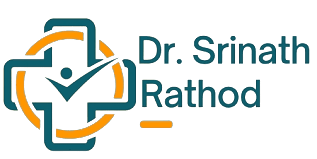Introduction:
Welcome to our Vein Health Guide, where we delve into the intricacies of varicose veins, providing you with a comprehensive understanding of this common vascular condition. Whether you’re seeking information for yourself or a loved one, our goal is to equip you with the knowledge needed to recognize, prevent, and manage varicose veins effectively.

What are Varicose Veins?
- Definition: Varicose veins are enlarged, twisted veins that often appear blue or purple in color, typically occurring in the legs and feet.
- Causes: Explore the underlying causes of varicose veins, including weakened or damaged valves in the veins, hereditary factors, pregnancy, obesity, and prolonged standing or sitting.
- Risk Factors: Discuss the various risk factors associated with varicose veins, such as age, gender (more common in women), family history, obesity, and pregnancy.
Symptoms and Diagnosis:
- Common Symptoms: Detail the signs and symptoms of varicose veins, including visible bulging veins, aching or heavy sensation in the legs, swelling, itching, and skin discoloration.
- Diagnosis: Describe the diagnostic process for varicose veins, including physical examination, ultrasound imaging, and other tests to evaluate the extent and severity of the condition.
Complications and Associated Conditions:
- Potential Complications: Highlight potential complications of untreated varicose veins, such as skin ulcers, blood clots (thrombophlebitis), and chronic venous insufficiency.
- Associated Conditions: Discuss conditions associated with varicose veins, including spider veins, deep vein thrombosis (DVT), and venous eczema.
Treatment Options:
- Conservative Management: Outline conservative measures for managing varicose veins, including lifestyle modifications (e.g., regular exercise, weight management, elevation of legs), compression stockings, and dietary changes.
- Medical Interventions: Discuss medical treatments for varicose veins, such as sclerotherapy, endovenous thermal ablation (laser or radiofrequency ablation), ambulatory phlebectomy, and vein stripping.
- Minimally Invasive Procedures: Explore minimally invasive procedures for varicose vein treatment, including ultrasound-guided foam sclerotherapy and endovenous glue closure (cyanoacrylate closure).
- Surgical Options: Provide information on surgical interventions for severe cases of varicose veins, such as ligation and stripping, and highlight advancements in minimally invasive surgical techniques.
Prevention and Lifestyle Tips:
- Prevention Strategies: Offer practical tips for preventing varicose veins, including maintaining a healthy weight, regular exercise, avoiding prolonged sitting or standing, elevating legs when resting, and wearing compression stockings.
- Lifestyle Modifications: Suggest lifestyle changes to reduce the risk of varicose veins, such as avoiding tight clothing, high heels, and crossing legs while sitting.
Living with Varicose Veins:
- Self-Care Tips: Provide self-care strategies for managing varicose veins at home, including leg exercises, proper skin care, and avoiding activities that exacerbate symptoms.
- Support Resources: Offer resources for individuals living with varicose veins, including support groups, online forums, and educational materials.
Conclusion:
In our Vein Health Guide, we have endeavored to demystify varicose veins and provide you with a comprehensive resource for understanding and managing this common vascular condition. By empowering yourself with knowledge and adopting preventive measures, you can take control of your vein health and minimize the impact of varicose veins on your quality of life. Remember, early recognition and intervention are key to effectively managing varicose veins and maintaining healthy, happy legs.
